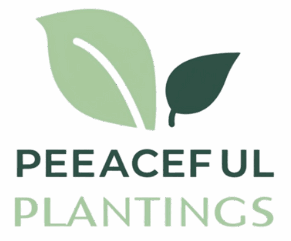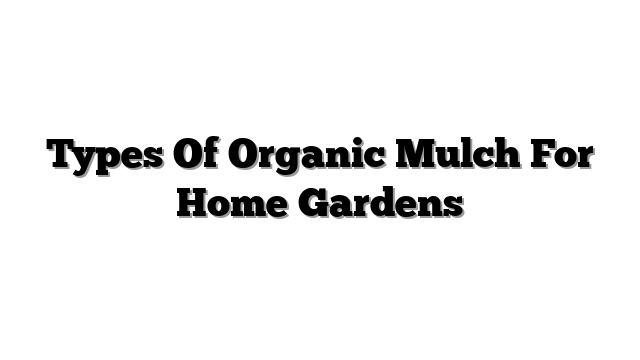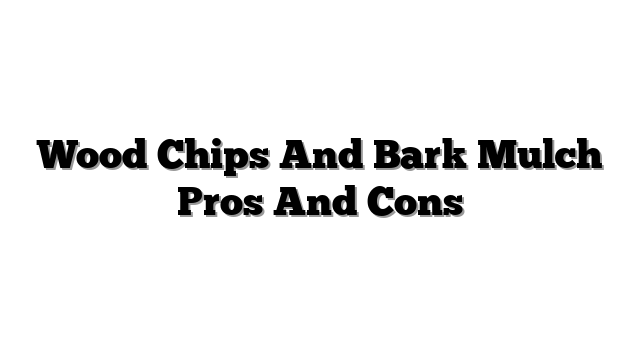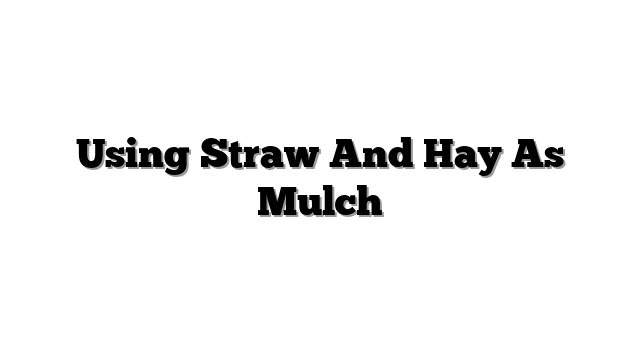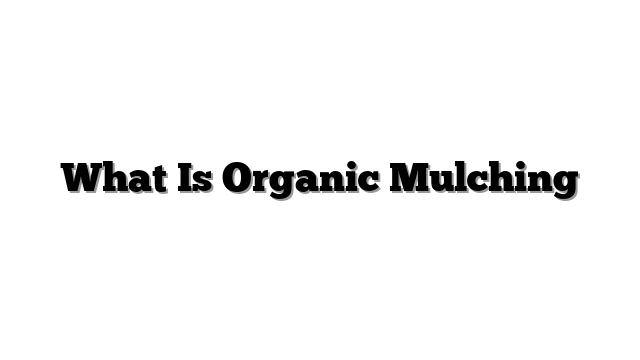Types Of Organic Mulch For Home Gardens
Gardens need help. Weeds grow fast. Soil dries out quick. Plants can struggle.
Mulch offers a simple fix. It covers the ground. It helps the soil. Mulch makes gardening easier.
Organic mulch is special. It comes from nature. It helps the soil more. It feeds the ground.
This guide helps you. We look at organic mulch types. We see their good points. We learn how to use them right.
Discover better gardening for beginners. See stronger plant health. Find the best Types of Organic Mulch for Home Gardens.
Why Your Garden Needs Organic Mulch
Bare soil is not happy soil. Sun bakes it hard. Rain washes it away. Weeds love bare soil.
Organic mulch changes things. It is like a soft blanket. It protects the soil surface. It helps plants grow better.
Some mulch is not organic. It might be plastic or rock. That mulch does not feed the soil. Organic mulch breaks down. It adds good stuff. This helps soil health.
Benefits of Organic Mulch are many. It saves water. It stops weeds. It keeps roots happy.
Mulch holds soil moisture. It slows water leaving. Less watering is needed. This saves water. Smart gardening saves water. This helps plant health. Roots stay moist longer.
Mulch stops weeds growing. It blocks sunlight. Weed seeds cannot sprout. This is Weed Control Using Mulch. Less weeding for you. A thick layer works best.
Soil temperature stays steady. Mulch cools roots in summer heat. It warms them in winter cold. Roots like steady temperatures.
Organic mulch feeds the soil. It breaks down slowly. This adds nutrients. It makes soil better. It helps soil structure. Soil gets loose and airy. Worms love mulched soil. These are beneficial organisms. Decomposition is key here.
Mulch stops soil moving. Wind and rain cannot wash it away. This is erosion control. Sloped areas need mulch.
Mulch looks nice too. It gives beds a clean look. It hides the dirt.
Mulching is sustainable gardening. It is eco-friendly gardening. It uses natural stuff. It helps the earth.
“Healthy soil grows healthy plants,” experts often say. Mulch helps soil greatly.
Explore Organic Mulch Types
Many natural things work as mulch. Each type has good points. Each has some bad points. Pick what fits your need.
We can group them. Some are wood. Some are plants. Some are other stuff.
Here are common Types of Organic Mulch for Home Gardens.
Wood Mulches
These last a long time. They look nice.
- Wood Chips: Pieces of wood. They stay put. Good for paths. Good around trees and shrubs. They break down slowly. They can take nitrogen from soil surface as they break down. This is usually not a big problem for plants. Use them in garden beds. They offer great weed suppression.
- Shredded Bark: Bark is pulled apart. It links together. Good for slopes. It stays in place well. Looks natural. Lasts a long time. Use around trees and shrubs. Good for garden beds. It breaks down slow.
Plant Mulches
These often add nutrients faster. They break down quicker.
- Straw: Dry plant stalks. Hay can have weed seeds. Straw is better. It is cheap. It holds moisture retention. Good for vegetable patch. It breaks down fast. Need to add more often.
- Grass Clippings: Cut grass from your lawn. Free mulch. Adds nutrients fast. Spread a thin layer. Thick layers get slimy. They can smell bad. Dry them first is best. Use in vegetable patch. Use under fruit trees.
- Leaves: Fallen tree leaves. Free and easy. Chop them up first. Whole leaves can mat down. Chopped leaves make leaf mould. Leaf mould is great for soil. Use under trees. Use in natural areas. Excellent for soil improvement.
- Pine Needles: Needles from pine trees. They break down slowly. They can make soil more acid. Good for plants liking acid soil. Blueberries love them. Rhododendrons like them. Use around evergreens. Check your soil pH.
Other Organic Mulches
Different materials work too.
- Cocoa Hulls: Shells from cocoa beans. Smell nice at first. Dark brown color. Good for flower borders. Adds some nutrients. Can be costly. Keep away from dogs. They can be bad for dogs.
- Shredded Paper / Cardboard: Old newspapers. Plain cardboard. Free or low cost. Blocks weeds very well. Cardboard is a strong barrier. Remove tape and labels. Must cover with other mulch. It does not look nice alone. Use in vegetable patch. Use under new beds.
- Mushroom Compost / Composted Manure: Very broken down organic stuff. Great for adding nutrients. Improves soil structure. Use a thin layer. Or mix into soil first. It is good for soil health.
Living Mulches
These are plants too. They cover the ground. Think of cover crops. They add life. They protect the soil. This is sustainable gardening.
Each type has its place. Think about your garden needs. Think about your plants.
Choose the Right Mulch
Which mulch is best? It depends on your garden. It depends on your goal.
Think about why you need mulch. Do you hate weeds most? Do you want to save water? Do you want better soil? Do you care how it looks? Is cost important?
This helps with Choosing the Right Organic Mulch.
Consider your plants. Different plants like different mulches. This helps pick the Best Organic Mulch for Different Plants.
- Vegetable patch: Straw works well. Grass clippings add food. Compost is great too. Cardboard stops tough weeds.
- Flower borders: Shredded bark looks good. Cocoa hulls smell nice. Leaf mould feeds flowers.
- Trees and Shrubs: Wood chips last long. Shredded bark stays put.
- Acid-loving plants: Pine needles help soil pH. Use them for blueberries. Use them for azaleas.
- Containers: Use lighter mulch. Compost works well. A thin layer is enough.
Think about your garden spot. Is it windy? Shredded bark stays better. Is it on a slope? Shredded bark resists washing. Are there pests? Some wood mulch near your house might worry you. This is rare in garden beds though. Pest control is usually not a mulch problem.
Think about your money. Grass clippings are free. Leaves are free. Shredded paper is free. Wood chips cost money. Cocoa hulls cost more. Sourcing mulch locally can save money.
Think how you want it to look. Dark bark looks clean. Straw looks more rustic. Aesthetic appeal matters.
Make a simple list. What do you need? What do you want? Match it to the mulch types. This makes choosing easy. Gardeners like simple choices. You can find cost-effective mulch.
Apply Organic Mulch Right
Putting mulch down is simple. But doing it right matters. Wrong ways can hurt plants.
First, get the bed ready. Pull out all the weeds. This helps with Weed Control Using Mulch. Water the soil first. Do this if it feels dry. Soil moisture helps. Clear away old leaves or trash.
Now, put the mulch down.
How to Apply Organic Mulch:
- Get your mulch ready.
- Use a rake or shovel.
- Spread mulch over the soil.
- Aim for 2 to 4 inches deep. This thickness of mulch layer is key. Too little does not work well. Too much smothers soil.
- Keep mulch away from plant stems. Leave a small gap.
- Keep mulch away from tree trunks. Leave a few inches bare.
Do not pile mulch high. Do not make a mulch volcano. Mulch volcanoes are bad. They hold wet against the trunk. This causes rot. Pests hide there too. Roots can grow into the mulch pile. They do not go into the soil. This makes trees weak.
Spread mulch evenly in beds. Cover all the soil.
Around trees, make a donut shape. The hole is around the trunk base. The donut is wide. It covers the root area.
In containers, use less mulch. One or two inches is fine.
How much mulch do you need? Measure your bed. Multiply length by width. That gives square feet. Multiply by depth needed (in feet). That tells you cubic feet. This helps calculating mulch needs.
Best times to apply? Spring is great. It stops summer weeds. It holds spring rain. Fall is good too. It keeps roots warm in winter. It adds protection.
Check your mulch layer. Does it look thin? Is soil showing? Time for replenishing mulch. Just add more on top. Do not make it too thick overall.
Follow these steps. Your plants will thank you.
Advanced Mulch Use
Mulching is easy. Some things are good to know. They help you more.
Sometimes you see fungi. Small mushrooms grow in mulch. They are usually fine. They mean mulch is breaking down. This is decomposition happening. It helps the soil.
Mulch can get hard. It can mat down. This happens with fine mulch. Like grass clippings. Rake it lightly. This lets air and water through. Avoid anaerobic layer. That means no air.
Worried about pests? Termites eat wood. They usually want moist wood near your house. Garden mulch is less risky. Keep wood mulch away from your home’s base. Slugs like moist places. Some mulches might offer shelter. Pest control starts with healthy plants.
Nitrogen tie-up happens. Fresh wood takes nitrogen to break down. This is usually just below the mulch. It does not hurt plants much. Especially if you use compost too.
Use your own materials. Composting makes great mulch. Leaf mould is free mulch. Using them is sustainable gardening. It closes the loop.
Think about cover crops. These are plants grown then cut. They become living mulch. They add great stuff to soil. This is eco-friendly gardening.
Know your soil pH. A simple soil test tells you. Acid-loving plants like low pH. Pine needles help lower pH.
Mulching saves water. It works with smart watering. Water conservation is important in 2025. Mulching helps plants use less water.
Mulched soil is better soil. Better soil helps native plants. They grow strong. They help bugs and birds.
Mulching makes gardens easier. It is key to a low-maintenance garden. Less weeding means more time to relax.
Try making DIY mulch. Shred leaves. Chip small branches. Use old paper. It is cheap and good.
“Gardening is easier with mulch,” many gardeners say. We agree completely.
Your Top Questions
People ask about mulch often. Here are some answers.
How deep should organic mulch be?
Around 2 to 4 inches is best. This thickness of mulch layer blocks weeds. It holds water well. It is good for gardening for beginners.
Can I use fresh grass clippings or leaves as mulch?
Yes, but use them right. Spread grass clippings thinly. Let them dry a bit. Chop leaves first. This helps decomposition. It stops them from matting.
Does organic mulch attract termites or pests?
It is not a big risk in garden beds. Termites like wood near houses. Keep wood mulch away from your home’s foundation. Healthy plants resist pests better. Mulch helps plant health. So mulch helps pest control.
How often do I need to replenish organic mulch?
Check it each year. Look at the depth. Add more when it gets thin. Replenishing mulch keeps it working. It helps a low-maintenance garden.
Is shredded bark or wood chips better for weed control?
Both work well. A good thickness of mulch layer is key. Shredded bark locks together more. It may stay in place better. Both offer good weed suppression.
A Thriving Garden Awaits
Organic mulch is a garden helper. It does so much good. It saves water. It stops weeds. It feeds the soil. It keeps roots happy.
We looked at many Types of Organic Mulch for Home Gardens. Each has its strengths. Choose the one that fits your needs. Learn How to Apply Organic Mulch correctly. Avoid the mulch volcano.
Using organic mulch is smart. It makes plant health better. It improves soil health. It makes your garden easier. It is a key part of sustainable gardening. It helps the earth.
Start using organic mulch today. See the difference it makes. Your garden will thank you.
Ready for a better garden? Explore more gardening guides. Find tips on soil care. Learn about composting. Make your garden thrive.
